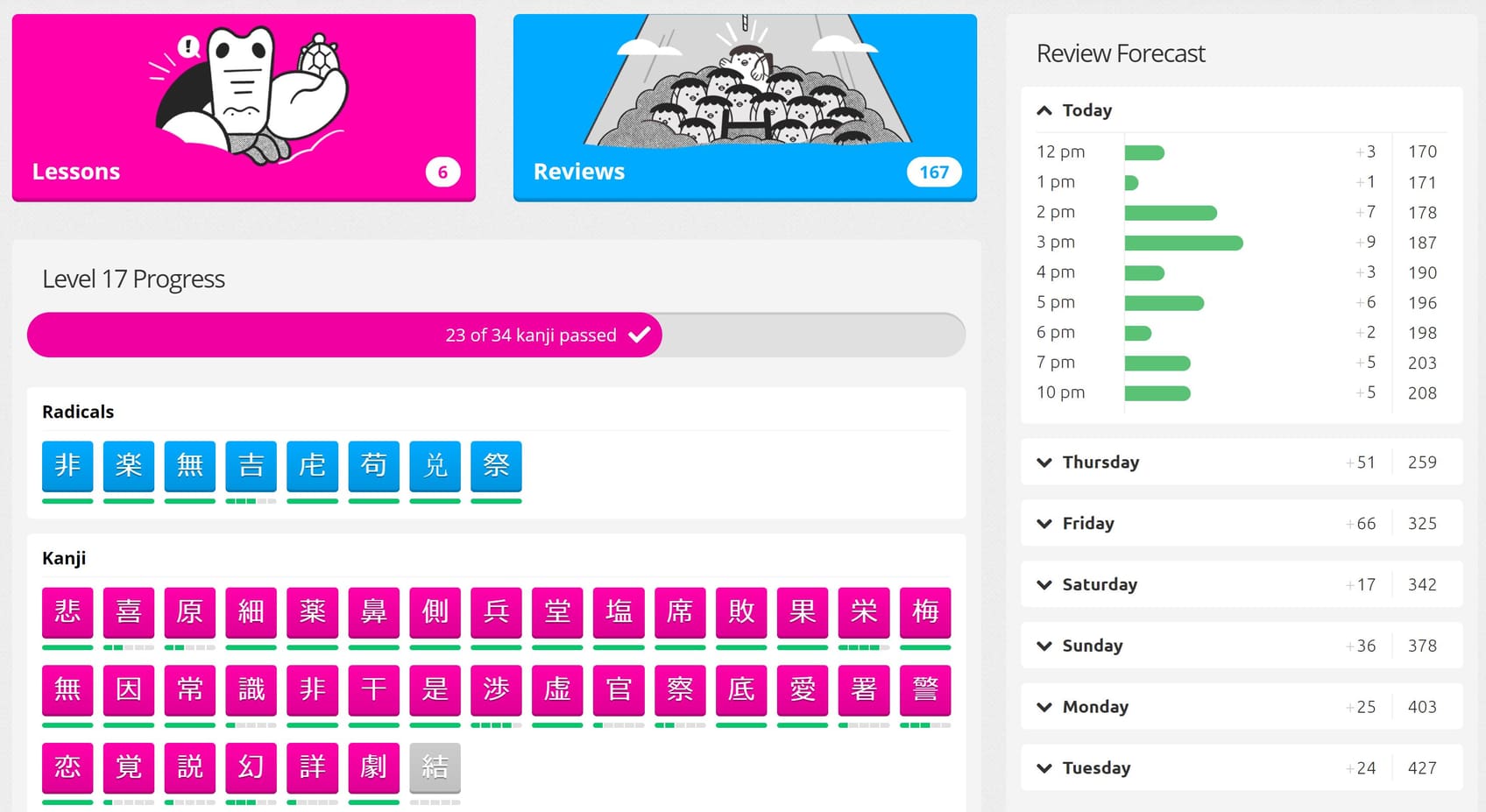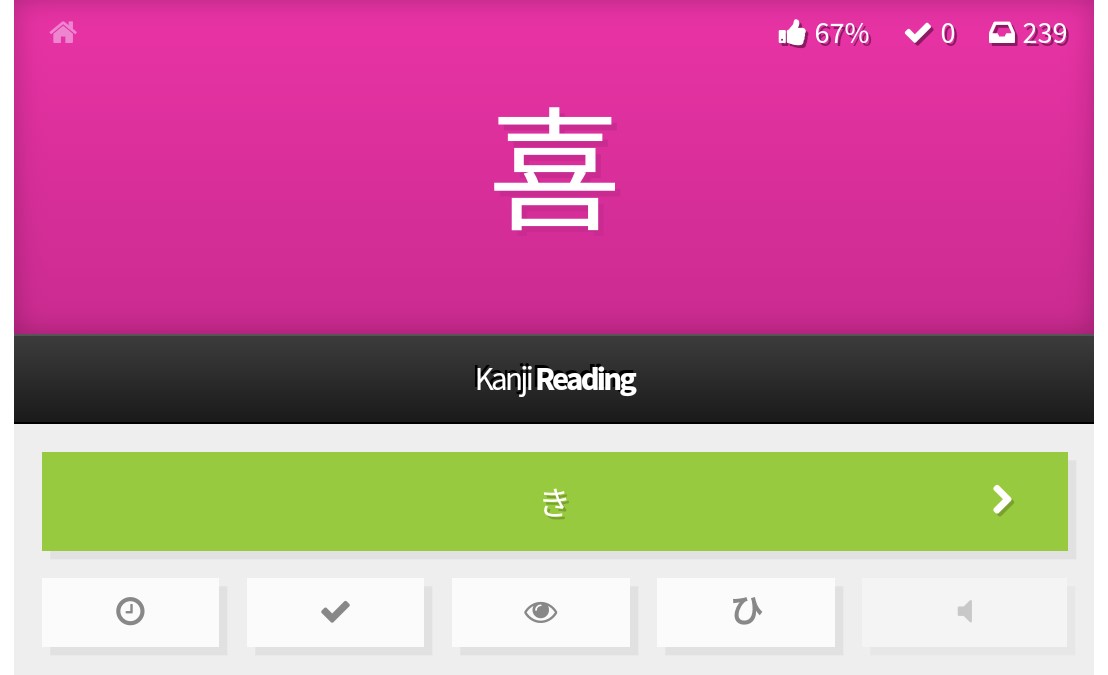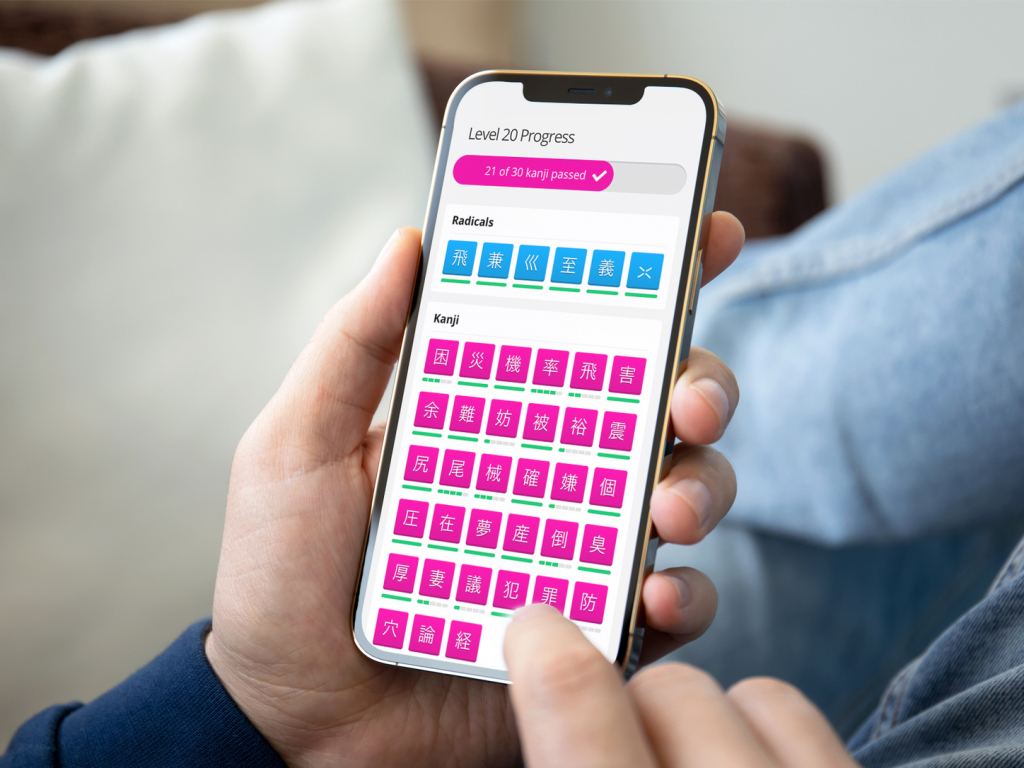In my quest to brush up and expand my very basic Japanese with only the help of electronic devices, I today stop by an old acquaintance. Though WaniKani isn’t officially what most people might think of as an app these days, it is a ‘web application,’ so it fits the theme of this series.
WaniKani’s primary purpose is the study of kanji but vocabulary and radicals (main components of kanji) are also part of the curriculum. There has been some debate whether learning radicals at all is actually useful since you can’t do much with them on their own. I’m a bit of a skeptic myself. What have those radicals ever done for us? On the other hand, the simple fact that I am writing this particular series should tell you that mine may not be the most authoritative voice on the subject.

Before there were computers and smartphones, language students used physical flashcards to drill complicated characters and new words. WaniKani’s approach is somewhat reminiscent of that concept. Its virtual flashcards are grouped in 60 levels and come in three types: kanji, vocabulary, and radicals. The central part of the app’s interface consists of two stacks, labeled ‘Lessons’ and ‘Reviews.’ The former provides you with new stuff to learn, the other quizzes you on things you have already come across. Lessons can be viewed in bunches of fives, giving you information on the meaning and reading of characters, translations of vocabulary words, as well as usage examples for every type of item. Hints on how to memorize kanji and radicals are also included though their helpfulness mostly depends on whether you share the WaniKani creators’ sense of humor.

After having a thorough look at your new items, you will be quizzed on them, typing in the meanings in English and the readings in hiragana (yes, you should be familiar with hiragana before starting on kanji). The system allows some leeway for typos in English but not in Japanese. Often, I find myself fuming at the screen: “But I MEANT to type the correct answer!” That argument, of course, never worked in school either.
After you get everything right once, viewed items will wander into the Reviews stack, which ideally you will work through until it’s down to zero. Don’t worry, it will refill. Leisurely at first, relentlessly later.
WaniKani is working even when you are not. I have been using the program for a while, rarely ever losing so much as a day. Except for this one time when I forgot to look into it for almost a week (it was on an overseas trip – remember those?). When I hurried back to the site in a panic, well over 500 items were waiting to be reviewed. I was never able to completely catch up. The harder I attacked those reviews, the more the algorithm threw at me.
That’s exactly the idea: The harder you study, the more you’ll get. For every reviewed item, you will be assigned a rank, starting at ‘Novice.’ When you reach the second rank, ‘Guru,’ on one or more items, new ones will be added to the ‘Lessons’ stack.

One of the big downsides of WaniKani is that it doesn’t teach stroke order. In other words: It will teach you how to read kanji, but not how to write them. At least not how to write them correctly, or how to write them correctly while someone is looking over your shoulder. More conservative Japanese-language enthusiasts might find that a deal-breaker. I was worried at first until I asked myself: How often do I actually have to write kanji by hand in real life? For smartphone chats and other machine-assisted writing, knowing the look, sound, and meaning of a character is sufficient.
For three years now, WaniKani has been the one study tool I have been using steadily (except for that one fateful week) even when I failed to study by any other means. Today, my Japanese speaking ability leaves a whole ocean to be desired. However, when it comes to reading and writing, I’m not entirely clueless. WaniKani might not be solely responsible for that small success but it played a significant part.
The first three of WaniKani’s 60 levels are free, then you can pay for monthly, annual, or lifetime access. Legend has it that a handful of Chosen Ones were able to complete all 60 levels in a year. But for normal people like me, I highly recommend the lifetime subscription.
Looking for more language learning fun? Check out these articles:
- Learning Japanese: Outdated Kanji that Are Still Fun to Use
- The (Almost) Complete Guide to Japanese Gestures, Body Language and Their Meanings
- 6 Unconventional Ways to Improve Your Japanese Language Skills
- Weekly Japanese Idiom: “Fuminfukyu” — Working Day and Night
- 14 Netflix Shows To Binge Watch (And Study Japanese With) Now
Updated On April 28, 2021









